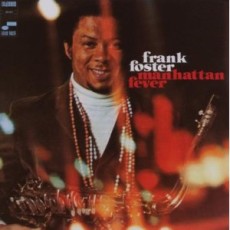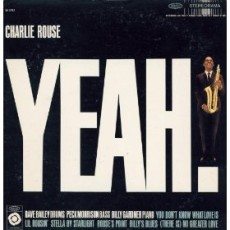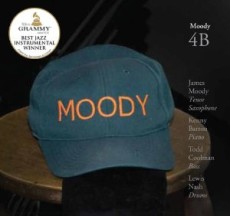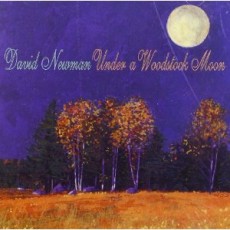
Daily Dose Of Jazz…
Frank Benjamin Foster III was born September 23, 1928 in Cincinnati, Ohio and began his musical career when he took up the clarinet at 11. Two years later he was playing the alto saxophone, quickly advanced and played with local bands by 14. He began composing and arranging at 15, leading his own 12-piece band while still in high school. He received his continued musical education at Wilberforce University but left with Snooky Young, moved to Detroit, playing the local jazz scene with Wardell Gray.
From 51-53 he served in Korea followed by joining Count Basie’s Big Band, contributed both arrangements and original compositions to Count Basie’s band including the standard, “Shiny Stockings” and other popular songs such as “Down for the Count,” “Blues Backstage,” “Back to the Apple,” “Discommotion,” and “Blues in Hoss Flat” as well as arrangements for the entire “Easin’ It” album.
From 1970 to 1972 he played with Elvin Jones, and in 1972 and 1975 with the Thad Jones-Mel Lewis big band. Frank went on to form and lead several groups, most notably Living Color and The Loud Minority while also co-leading a quintet with Frank Wess in 1983, and toured Europe with Jimmy Smith’s quintet in 1985.
By June 1986 Foster succeeded Thad Jones as leader of the Count Basie Orchestra and during his tenure Dr. Foster received two Grammy Awards for his big band arrangement of the Diane Schuur composition “Deedles’ Blues” and for his arrangement of the renowned guitarist/vocalist George Benson’s composition “Basie’s Bag”.
Over his career he was never far from education spending time teaching at the New England Conservatory of Music, New York City Public School System in Harlem, and State University of New York, Buffalo. Suffering a stroke in 2001, Frank Foster discontinued his playing but continued to lead The Loud Minority on limited engagements but soon passed the helm to trumpeter Cecil Bridgewater.
The tenor and soprano saxophonist and flautist amassed throughout his career twenty-six albums as a leader, thirty-four as a sideman and arranged five albums for Sarah Vaughan, Diane Schuur, Frank Sinatra, George Benson and Count Basie. Saxophonist Frank Foster continued to compose and arrange until his passage on July 26, 2011 at the age of 82.

Daily Dose Of Jazz…
Oliver Lake was born in Marianna, Arkansas on September 14,1942 and his family moved to St. Louis when he was two. He began drawing at the age of thirteen and soon after began playing cymbals and the bass drum in a variety of drum and bugle corps. At 17, he began to take a serious interest in jazz and started playing percussion followed by alto saxophone. His piercing, bluesy, biting sound is his trademark and his explosive unpredictable solos are akin to Eric Dolphy.
During the 1960s Oliver taught school, worked in several contexts around St. Louis and led along with Julius Hemphill and Charles “Bobo” Shaw, BAG, the Black Artists Group. In 1972 Lake moved to Paris for two years working with his colleagues from BAG, returned to New York and immersed himself into the then burgeoning jazz loft scene. Like many other members of BAG, (Black Artists Group) and its Chicago-based sister organization, the Association for the Advancement of Creative Musicians (AACM), he moved to New York in the mid-’70s, working the fertile ground of the downtown loft scene and quickly establishing himself as one of its most adventurous and multi-faceted musician.
Oliver is co-founder of the internationally acclaimed World Saxophone Quartet with Julius Hemphill, Hamiet Bluiett and David Murray in 1977. Over the next two decades the group crossed over to new audiences, in part, due to their late 80s albums of Ellington and popular R&B tunes. He leads his own Steel Quartet and Big Band; has worked with hip hop artists Mos Def and A Tribe Called Quest and Me’shell Ndegeocello; has created a groundbreaking roots/reggae ensemble “Jump Up”; founded Passin’ Thru, Inc. – a non-profit dedicated to fostering, promoting and advancing the knowledge, understanding and appreciation of jazz, new music and other disciplines related to music.
Oliver Lake, the alto saxophonist, flautist, composer, poet and painter has collaborated with numerous notable choreographers, poets and a veritable Who’s Who of the progressive jazz scene of the late 20th century. He has recorded as a leader for Freedom, Black Saint, and Black Lion, Novus, Gramavision, Blue Heron Gazell, Soul Note and other record labels. The mainstay of the avant-garde and free jazz realms continually performs all over the U.S. as well as in Europe, Japan, the Middle East, Africa and Australia. He paints daily, using oil, acrylics, wood, canvas, and mixed media.

Daily Dose Of Jazz…
Charlie Rouse was born on April 6, 1924 in Washington, DC. He played tenor saxophone and flute, developing a distinctive nasal tone complimenting a bop-oriented style. Rouse moved very little, looked straight-ahead and wore a solemn expression when he played. He became highly influential by association with Thelonious Monk from 1959 to 1970. He would later become a founding member of Sphere, a band that paid tribute to Monk’s music.
Throughout the forties Rouse worked with Billy Eckstine, Dizzy Gillespie, Duke Ellington, made his recording debut with Tadd Dameron, and as the 50’s opened he was a part of Count Basie’s octet, and worked with Clifford Brown and Oscar Pettiford. He co-led the Jazz Modes with Julius Watkins and would go on to work with Mal Waldron. He would record, as a leader gaining some recognition by the eighties; with Carmen McRae on her classic Carmen Sings Monk project, and his last recording would be a Monk tribute concert.
The hard bop tenor and flautist died of lung cancer at the age of 64 in Seattle, Washington on November 30, 1988. Coincidently, Monk’s patroness NIca de Koenigswarter died the same day in New York City.

Daily Dose Of Jazz…
James Moody was born March 26, 1925 in Savannah, Georgia but grew up in New Jersey. He was attracted to the saxophone after hearing George Holmes Tate, Don Byas, and Count Basie. Joining the U.S. Air Force in 1943 he played in the “Negro Band” on the segregated base. Following his discharge, he began playing bebop with Dizzy Gillespie for two years. One of his colleagues was Kenny Barron, who would become an important collaborator.
He recorded his first record for Blue Note in 1948, the first in a long career playing both saxophone and flute. Relocating to Europe for three years stating he had been scarred by racism in the U.S., it was during this period that his acclaimed hit “Moody’s Mood For Love” was recorded and he added the alto to his repertoire. Returning to the States in 1952 he recorded with Prestige, played flute and sax with Pee Wee Moore and by the 60’s rejoined Dizzy.
Throughout the seventies he worked in Las Vegas show bands before returning to jazz as a leader and playing with the Lionel Hampton’s Golden Men Of Jazz. Preferring the tenor, Moody alternates with the alto and adding flute on many of his recordings.
The octogenarian continued to be a globetrotter with his quartet featuring pianist Renee Rosnes, bassist Todd Coolman and drummer Adam Nussbaum. He is a member of the Dizzy Gillespie Alumni All-Stars Big Band, often collaborating with conductor Jon Faddis, and worked alongside Jon in the WDR Big Band in Cologne, Germany. James Moody has been an institution in jazz since the 1940’s playing tenor, flute and occasionally the alto saxophone.
Saxophonist, flautist and composer James Moody passed away of complications from pancreatic cancer at age 85 in San Diego, California on December 9, 2010. Two months later he was posthumously awarded the Grammy Award for Best Jazz Instrumental Album for his recording “Moody 4B”, and named in his honor, the New Jersey Performing Arts Center hosts the James Moody Democracy of Jazz Festival.

Daily Dose Of Jazz…
David Newman Jr. was born on February 24, 1933 in Corsicana, Texas. He got his nickname in high school when his then music teacher noticed his upside down sheet music tapped him on the head with his conductors baton and called him “Fathead”. Preferring to be called David, the jovial Newman accepted the nickname that stuck with him his whole life.
Moving to Dallas he graduated from Lincoln High School, began playing flute and tenor at local shows, and received a scholarship to Jarvis Christian College where he studied theology and music for two years. This brief stay was followed with him on the road touring with Bester Smith (Charlie Parker’s mentor) and dance hall one-nighters with T-Bone Walker.
Newman’s professional career as a musician began in 1954 as a member of the Ray Charles Band playing baritone sax that was the beginning of a twelve-year relationship followed by ten years with Herbie Mann and playing with Red Garland for a period in the 70’s. By the late 90’s he was recording for HighNote Records and a long and profitable relationship started producing some ten albums.
For over a half century, Newman recorded over thirty-eight albums under his own name beginning in 1958 with Fathead – Ray Charles Presents David Fathead Newman. Although best known for his hard bop style, he’s recorded with James Clay, Cannonball Adderley, Stanley Turrentine, Aretha Franklin, B. B. King, Natalie Cole, Average White Band, Eric Clapton, Jimmy McGriff and many others.
Always a musicians’ musician, Newman has influenced whole generations of saxophone players of different genres including R&B, blues and country, and texmex. On January 20, 2009, saxophonist and flautist David “Fathead” Newman died from complications of pancreatic cancer in Kingston, New York at age 75.




